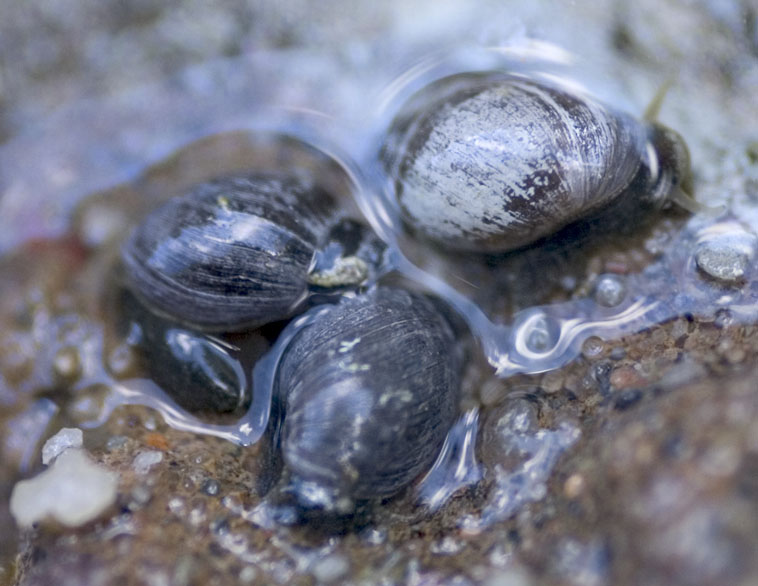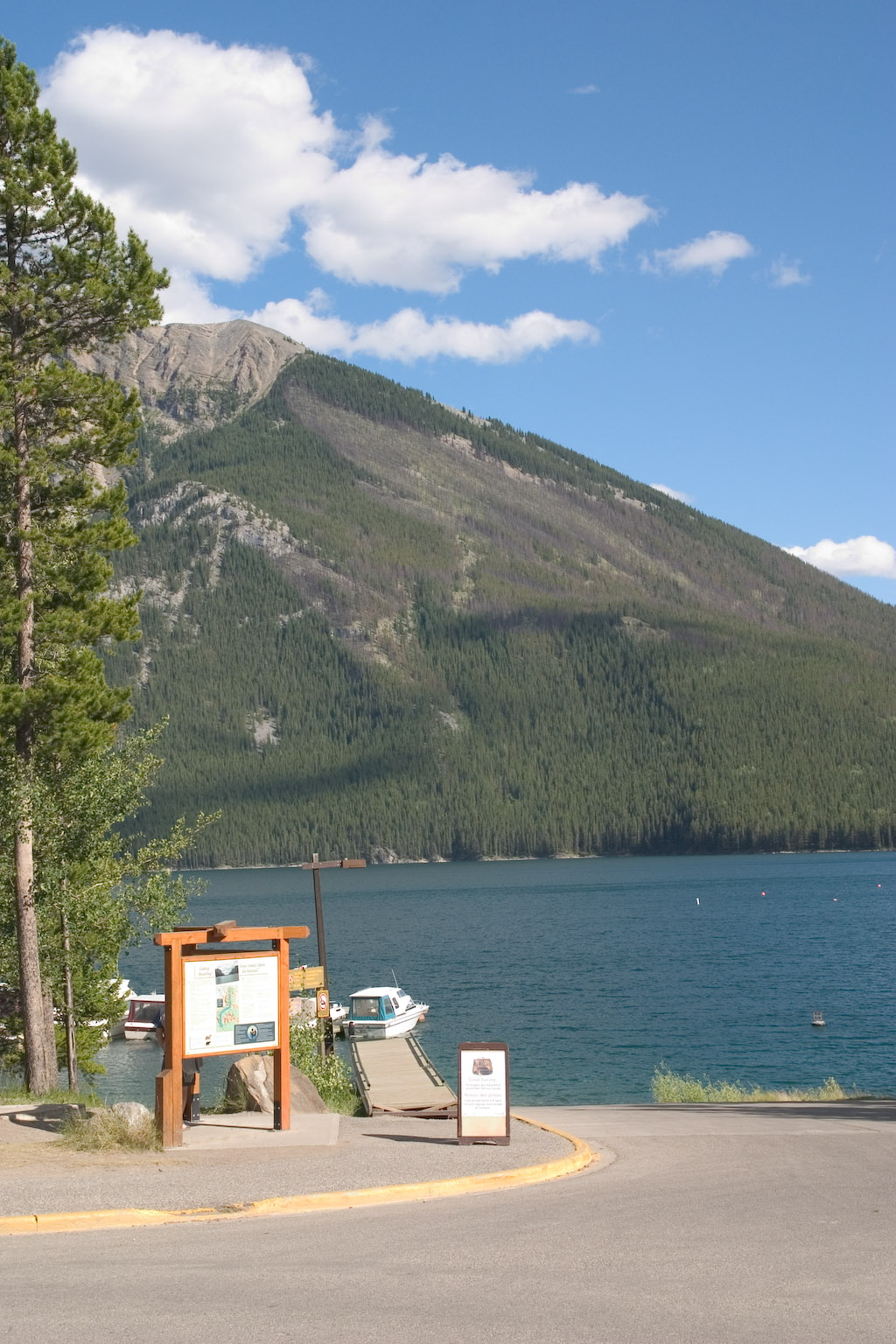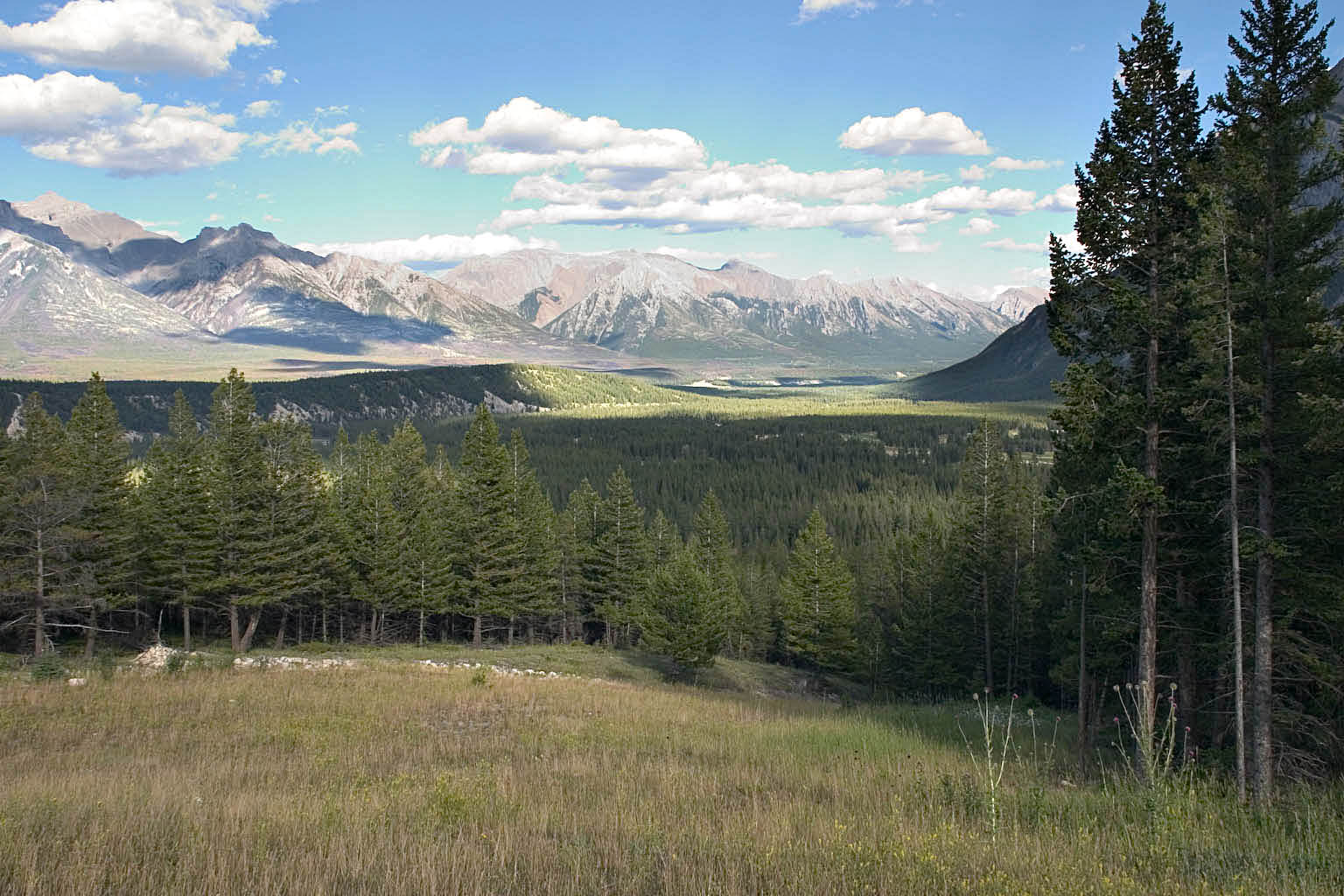Tuesday, August 2, 2005 --
Banff Hot Springs and Bankhead Ghost
Town
This was our last day to see the sights, and we were kind of running
out of things to do.
Left on the list were the Banff Hot Springs, the gondola, and, uh,
well, we didn't quite know what else.
First, to the hot springs...

The big thing about the Springs is the unique ecology. The Banff
Springs Snail is particularly noteworthy.

Here's what you actually see:




What was once a bath, is now a reflecting pool.

Inside, the cave and grotto have been opened up and largely
finished. This stereo pair is designed for parallel viewing (not
cross-eyed).

In the creek above the grotto, were these air-breathing aquatic insect
larvae. I don't know what they turn into.

This is the wetlands below the bathhouse. There was a muskrat
swimming through the channel near the bottom of the picture...

...but by the time I could zoom and focus, all I got was his tail
disappearing!

Notes about the stream...

...and the algae itself...

Largely unrelated to the hot springs, except that they helped to build
the facility, we have the story of Canada's World War I treatment of
their
foreign immigrants. (Click and expand to read all the text.)


Here's the gondola platform. We decided not to ride the
gondola. Too many people, too much money. I remember making
a rough estimate of how much they made running people up the mountain,
based on the rate of gondola cars, people per car, and $$/ticket.
It was something like $100,000 per day.

I did take a few minutes to study the mechanism, though. It
appears to me that the gondola rides on wheels on a fixed cable, while
being pulled along by a moving cable that is fastened to the cars with
a friction clutch. Here's a "closeup" of the mechanism.

After we left the gondola, we drove a little down and across the
freeway, to Minnewanka lake (park, look, and leave). I believe
the dead trees on the hillside across the way are from another
prescribed burn.

Here's a closeup of the sign at left.

And then it was off to Bankhead, a famous old coal-mining ghost town
very near to Banff, at the base of Cascade Mountain where the coal came
from.


(Remember that you can click on any of these to blow them up so that
you can see the text better.)





Says the sign on the device: "Coal dust and poisonous, explosive
methane gas quickly filled the mine's 320 km of tunnels. Without
ventilation, the mine would have been impossible to work in.
Large fans like this kept fresh air moving, driving out the fouled air."


And indeed, the foundations were impressively massive...


There were a lot of large rhubarb plants around.
Apparently these are left over from the Chinese immigrants, presumably
descendents of the original plants.



This is one of the old locomotives. It ran on compressed air.



And then the sun went down, and that was the end of the day.

--Rik
This page last modified May 31, 2006.




































